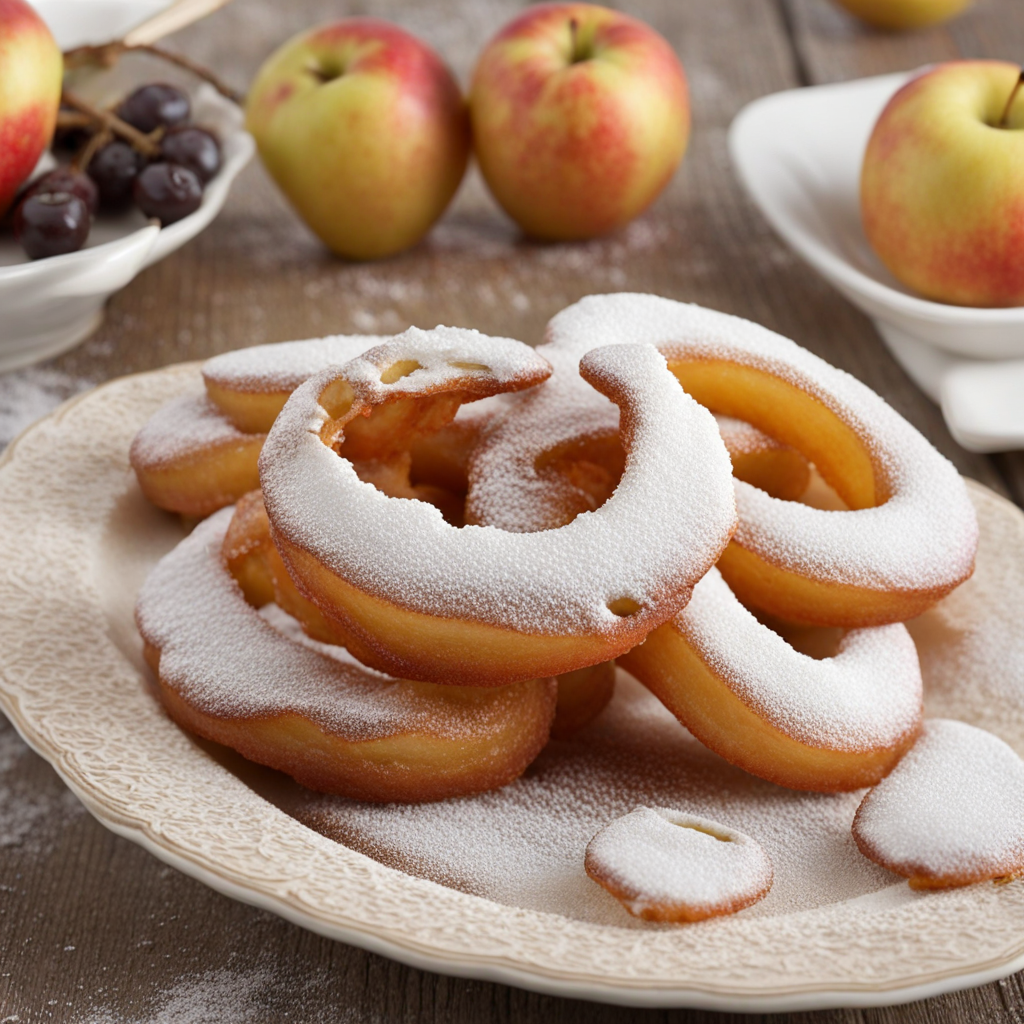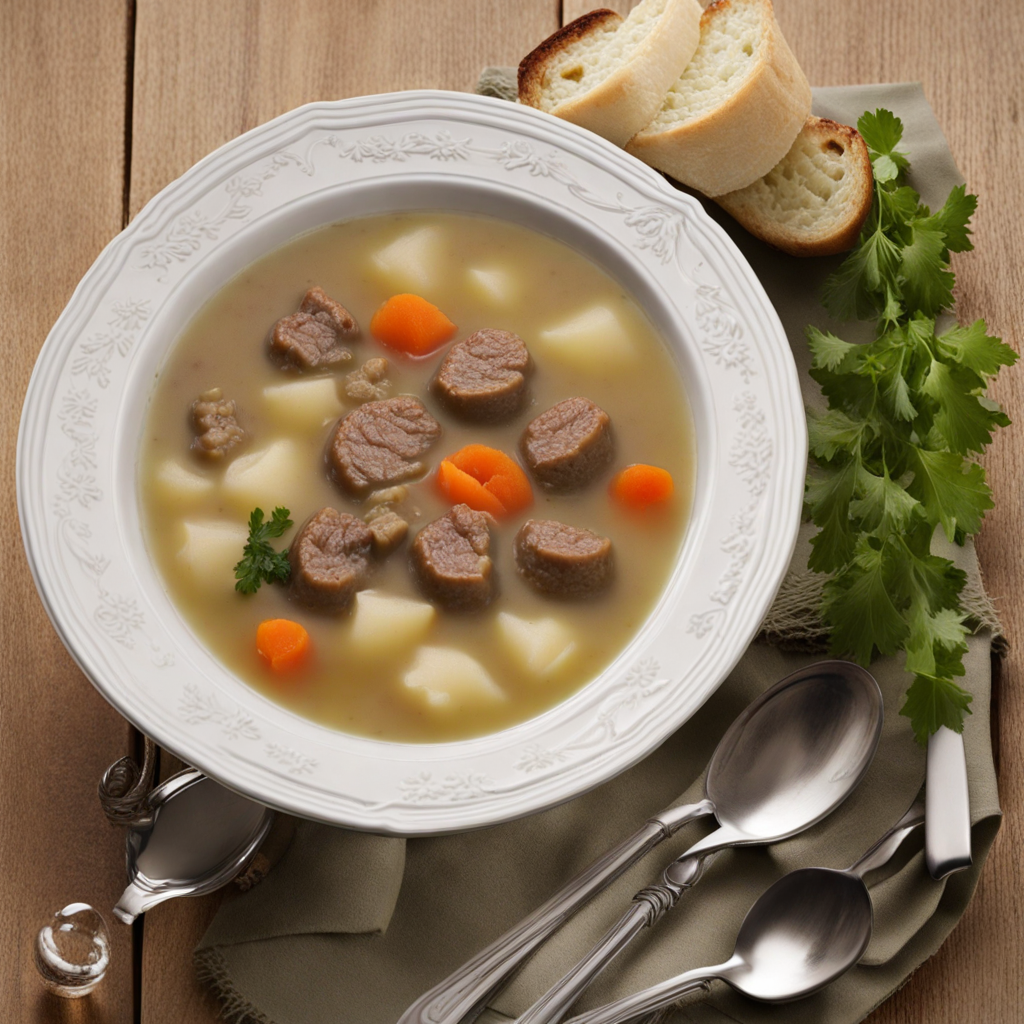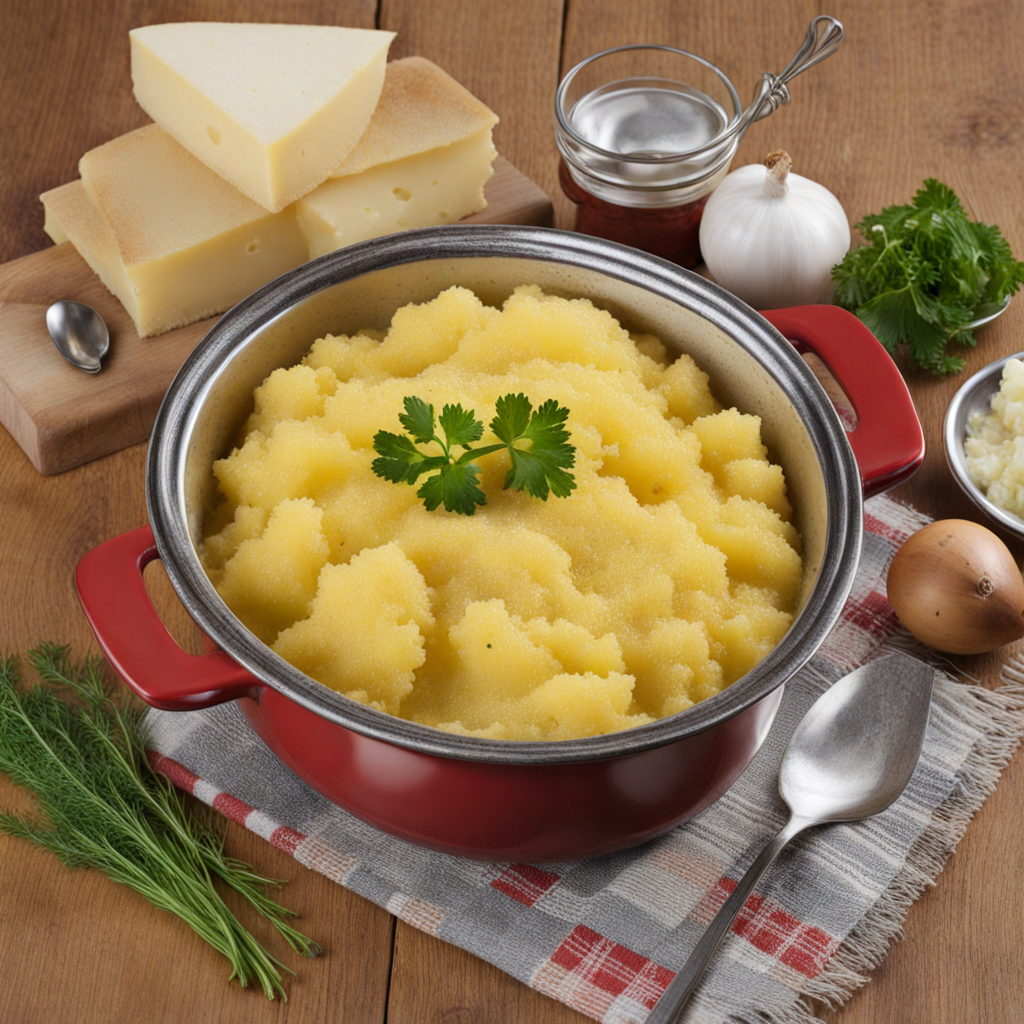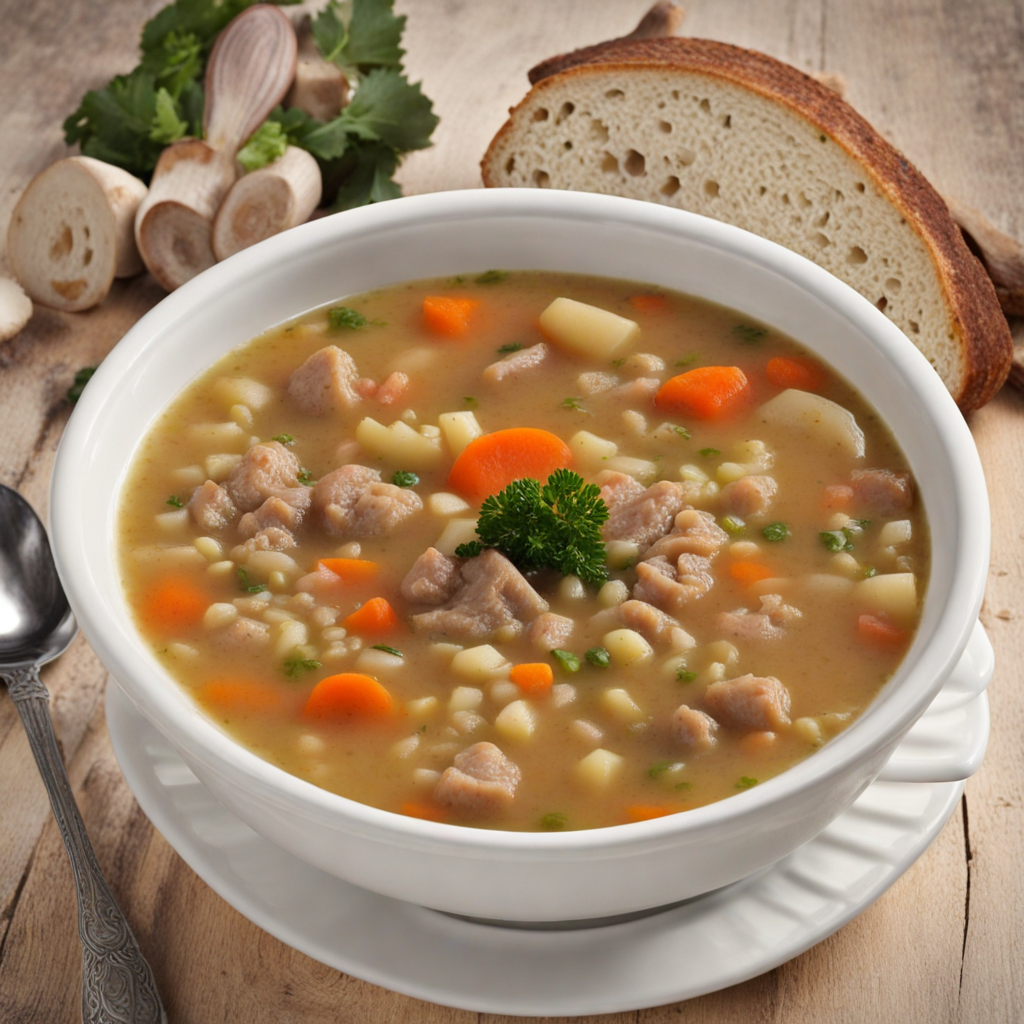Apfelküchle
Apfelküchle, a delightful treat from Liechtenstein, is a traditional dish that showcases the natural sweetness of apples. These apple fritters are typically made by slicing fresh apples into rings, which are then coated in a light, fluffy batter. The batter usually consists of flour, eggs, milk, and a hint of sugar, creating a perfect balance that enhances the flavor of the apples while providing a satisfying crunch. When deep-fried to a golden brown, the outer layer becomes crisp, while the apple slices within remain tender and juicy, offering a delightful contrast in texture with every bite. The preparation of Apfelküchle is a simple yet rewarding process, often enjoyed during festive occasions or as a comforting dessert. Once fried, they are usually dusted with powdered sugar, adding an extra touch of sweetness that complements the tartness of the apples beautifully. Some variations may include a dash of cinnamon or a drizzle of honey, which further elevate the dish’s flavor profile. Served warm, these fritters are perfect with a side of vanilla ice cream or a dollop of whipped cream, making them an indulgent treat that appeals to both young and old alike. In Liechtenstein, Apfelküchle is more than just a dessert; it represents a sense of nostalgia and home-cooked goodness. Families often gather to enjoy this dish, passing down recipes from generation to generation. The experience of savoring Apfelküchle goes beyond taste, as it evokes feelings of warmth and togetherness, capturing the essence of Liechtenstein's culinary heritage. Whether enjoyed at a local café or made at home, these apple fritters are a delightful way to experience the unique flavors of this charming alpine country.
How It Became This Dish
The Culinary Journey of Apfelküchle: A Sweet Tradition from Liechtenstein #### Origins: A Taste of Tradition Apfelküchle, a delightful dish that has graced tables in Liechtenstein for generations, is a testament to the rich culinary heritage of this small, landlocked principality nestled between Switzerland and Austria. The name "Apfelküchle" translates to "apple cakes," and they are essentially deep-fried apple fritters, often dusted with powdered sugar and sometimes served with a side of vanilla sauce or ice cream. The origins of Apfelküchle can be traced back to the early 19th century, though some sources suggest that variations of apple fritters may have existed even earlier. The dish is believed to have emerged in rural communities, where apples were abundant and easy to cultivate. In these agrarian societies, cooking methods often revolved around seasonal produce, and apples were a staple fruit, used in various forms, including pies, preserves, and, of course, fritters. #### Cultural Significance: A Symbol of Community and Celebration In Liechtenstein, Apfelküchle is more than just a dessert; it embodies a sense of community and celebration. Traditionally, these apple fritters are prepared during local festivals, family gatherings, and harvest celebrations. The act of making Apfelküchle is often a communal activity, with family members coming together to peel, slice, and batter the apples. This shared experience fosters a sense of belonging and continuity, as recipes are passed down through generations. Apfelküchle also reflects the seasonal rhythms of life in Liechtenstein. They are particularly popular in autumn when apples are harvested. The dish not only showcases the region’s agricultural bounty but also acts as a symbol of gratitude for the land and its produce. In this way, Apfelküchle serves as a culinary reminder of the deep connection between the people of Liechtenstein and their environment. #### Ingredients and Preparation: A Simple Yet Artful Craft The preparation of Apfelküchle is relatively straightforward, yet it requires a certain level of skill to achieve the perfect balance of flavors and textures. The main ingredients include fresh apples, typically tart varieties like Granny Smith or Boskoop, flour, eggs, milk, and a hint of sugar and cinnamon for flavor. Some recipes may call for sparkling water or beer in the batter to create a lighter, crispier texture. To prepare Apfelküchle, the apples are peeled and cored, then sliced into rings or thick rounds. The batter is made by combining flour, eggs, milk, and sugar, with a touch of cinnamon for warmth. The apple slices are dipped into the batter and then deep-fried until golden brown. The result is a deliciously crispy exterior that encases the tender, sweet apple inside. Once cooked, Apfelküchle is typically dusted with powdered sugar and can be served with various accompaniments, such as vanilla sauce, whipped cream, or a scoop of ice cream. This versatility allows for personal touches and variations, making the dish a canvas for creativity in the kitchen. #### Development Over Time: From Rural Roots to Culinary Recognition As Liechtenstein developed throughout the 19th and 20th centuries, so did the culinary landscape, including the evolution of Apfelküchle. In the early days, the dish was primarily a home-cooked treat, enjoyed by families and shared among neighbors. However, as tourism began to flourish in the region, particularly in the latter half of the 20th century, Apfelküchle found its way onto restaurant menus, gaining recognition beyond local circles. The rise of gastronomy in Liechtenstein has led to a renewed interest in traditional dishes like Apfelküchle. Chefs have begun to experiment with the recipe, incorporating modern twists while still honoring its roots. For instance, some restaurants now offer gourmet versions, featuring locally sourced heirloom apples or infusing the batter with unique flavors such as cardamom or nutmeg. Additionally, the dish has become a staple at food festivals and markets, where street vendors serve up freshly made Apfelküchle, showcasing the culinary heritage of Liechtenstein to both locals and tourists alike. This exposure has helped to solidify Apfelküchle's place in the national identity, making it a beloved symbol of Liechtensteinese culture. #### Apfelküchle in Contemporary Culture: A Dish for All Occasions Today, Apfelküchle continues to hold a cherished spot in the hearts of the Liechtenstein people. It is commonly served during family celebrations, holidays, and community fairs. In the context of modern culinary trends, there is a growing appreciation for traditional foods, particularly those that emphasize local ingredients and sustainable practices. As a result, Apfelküchle has experienced a renaissance, with home cooks and chefs alike celebrating its simplicity and versatility. Moreover, Apfelküchle has transcended its regional origins, finding a place in the broader narrative of European pastry and dessert culture. Variations of apple fritters can be found in many countries, from the German "Apfelküchle" to the Polish "szarlotka," showcasing how beloved recipes can travel and evolve while retaining their core identity. #### Conclusion: A Sweet Legacy In conclusion, Apfelküchle is more than just a delicious dessert; it is a sweet symbol of Liechtenstein's rich cultural heritage and community spirit. From its humble origins in rural kitchens to its contemporary status as a beloved treat, Apfelküchle embodies the essence of tradition, seasonal celebration, and culinary creativity. As Liechtenstein continues to navigate the complexities of modernity, dishes like Apfelküchle serve as reminders of the importance of preserving culinary traditions, fostering community bonds, and celebrating the bountiful gifts of the land. Whether enjoyed at home or in a bustling festival, Apfelküchle stands as a testament to the enduring power of food to connect people and cultures across time.
You may like
Discover local flavors from Liechtenstein






